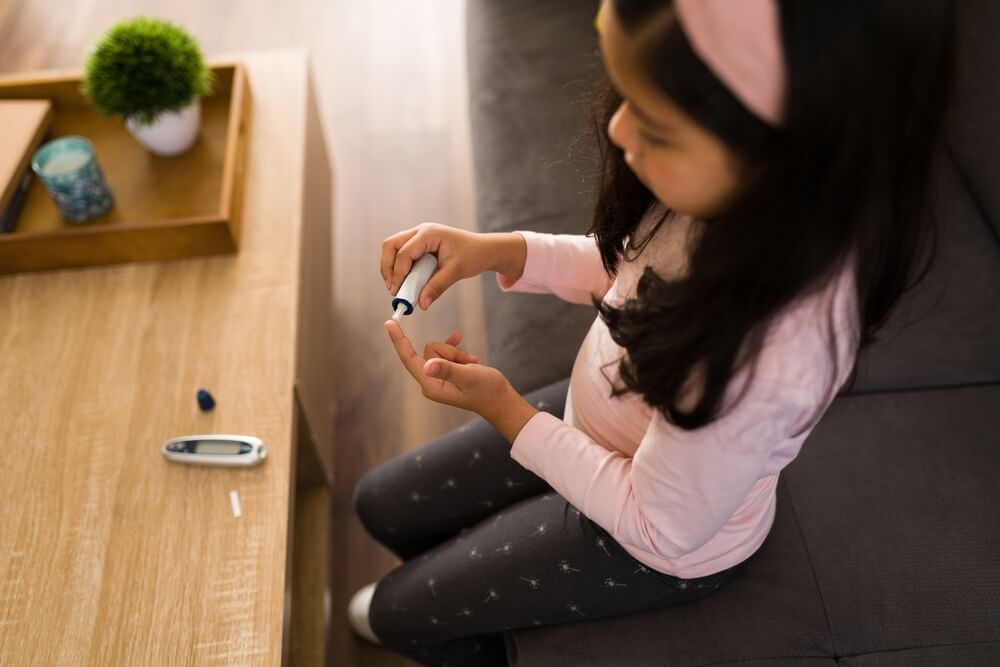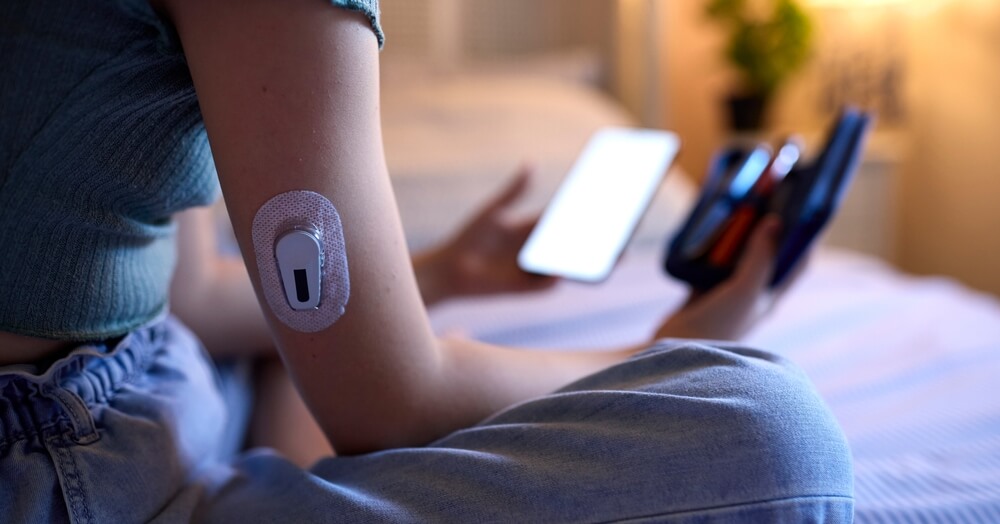Type 1 diabetes in children will often be defined as a condition in which the body of the child fails to produce insulin, and the missing hormone needs to be replaced either with the help of an insulin pump or with injections. Type one diabetes in children may also be called insulin-dependent diabetes or juvenile diabetes.
Learning that your child has pediatric diabetes during well-child checks can be a shocking experience. Still, with the expert help of the professionals at the Children’s Medical Center of South Florida, parents may learn about effective treatment options, lifestyle, and dietary changes that can help both the parent and the child mitigate the effects of the condition.
About Type 1 Diabetes in Children

Facing a type 1 diabetes diagnosis can be overwhelming both for the child and the parent, especially when adjusting to the new lifestyle requirements the condition necessitates. Suddenly, parents – and depending on their age – even children need to learn how to administer injections, monitor blood sugar, and count carbohydrates.
Also, type 1 diabetes in children can’t be cured, meaning it’s a lifelong condition. Still, the disease can be managed, and thanks to the medical advancements in both insulin delivery and blood sugar monitoring, the life quality of children with pediatric diabetes has significantly improved.
Symptoms of Diabetes in Children
For the most part, diabetes symptoms in children will develop quickly and will most probably include the following:
- Extreme hunger
- Increased thirst
- Unintentional weight loss
- Frequent urination
- Fruity-smelling breath
- Behavioral changes like irritability
- Fatigue
Causes of Diabetes in Children
After talking about diabetes symptoms in children, it’s time to assess the causes. Unfortunately, the exact cause of the condition in children is unknown. Still, in the majority of type 1 diabetes cases, the body’s immune system mistakenly eliminates all cells that produce insulin in the pancreas. Experts believe that this can be attributed to both environmental and genetic factors. When all of these cells are destroyed, the child’s body produces no insulin, which carries glucose or sugar from the bloodstream to all bodily cells for energy. Without insulin, glucose is left in the bloodstream, which can be fatal if not treated in time.
On that note, type 1 diabetes in children may develop at any age, and the following risk factors can contribute to its occurrence:
- Family history
- Certain viruses
- Race (non-Hispanic with children are more likely to develop pediatric diabetes in the US)
- Genetics
Complications of Diabetes In Children
The condition can affect several major organs, and the complications may include the following:
- Nerve damage
- Blood vessel and heart disease
- Kidney damage
- Osteoporosis
- Eye damage
On the other hand, children with pediatric diabetes are more likely to develop other autoimmune disorders, such as celiac disease and thyroid problems.
Preventing Type 1 Diabetes in Children
Unfortunately, there’s no proven way to prevent diabetes in children. Still, the antibodies that are associated with the condition in children who are at risk of developing the disorders can be detected even years before the first symptoms of diabetes occur.
Diagnosing Diabetes in Children
Usually, experts will use the following blood tests to diagnose type 1 diabetes in children:
- Fasting blood tests.
- Random blood sugar tests.
- A1C or glycated hemoglobin tests.
If these tests indicate the presence of pediatric diabetes, providers may also recommend other tests to establish whether the child is dealing with type 1 or type 2 diabetes. This is utterly important as the two conditions will require different treatment strategies.
Treating Type 1 Diabetes in Children
Generally, medical experts will aim to treat the condition with the following approaches:
- Eating healthier
- Introducing regular exercise
- Taking insulin
- Monitoring blood sugar levels.
Healthy Diet
Food plays a vital part in any treatment approach for diabetes. Still, this doesn’t mean that your child will have to follow a strict diet. Just like other family members, your child should regularly eat foods that are low in fat, nutritious, and low in calories, such as:
- Fruits
- Lean protein
- Vegetables
- Whole grains
Working together with a dietician can help you create a meal plan your child can easily follow, tailored to their preferences and needs. These experts will also help you with counting carbohydrates.
Regular Exercise
Regular aerobic exercise is essential for everyone, including children with type 1 diabetes. However, it’s crucial to recognize that physical activity can impact blood sugar levels. These effects may persist for several hours post-exercise, potentially extending into the night. As a result, you may need to make adjustments to your child’s meal plan or insulin doses to accommodate the increased activity levels.
When your child embarks on a new physical activity, it’s advisable to monitor their blood sugar more frequently than usual. This will help you and your child better understand how their body responds to the specific activity.
Incorporating physical activity into your child’s daily routine is highly encouraged. Aim to motivate your child to engage in a minimum of 60 minutes of physical activity daily, or even better, participate in these activities alongside them.
Insulin
Children with type 1 diabetes will require lifelong treatment with at least one type of insulin. There are several types available, and they include:
- Short-acting insulin
- Rapid-acting insulin
- Long- and ultra-long-acting options
- Intermediate-acting insulin
When talking about insulin delivery methods, parents will usually be able to opt between the following:
- Insulin pumps
- Syringes and fine needles
- Insulin pens with fine needles
Monitoring Blood Sugar

Checking and documenting your child’s blood sugar levels is essential and should be done a minimum of four times daily. Typically, you or your child will perform blood glucose tests before each meal, at bedtime, and occasionally during the middle of the night. However, if your child does not have a continuous glucose monitor, you may need to increase the frequency of these checks.
Frequent testing serves as the primary method to ensure that your child’s blood sugar levels consistently align with the target range. It allows for real-time monitoring and adjustment of their diabetes management plan.
On that note, you can choose from the following monitoring devices:
- CGM or continuous glucose monitoring devices: these use temporary sensors to measure blood sugar levels every few minutes. The sensors are inserted under the skin.
- Closed-loop systems: These are implanted in the body, linking a glucose monitor to an insulin pump, automatically delivering the required amount of insulin when needed.
Managing Type 1 Diabetes in Children With Expert Help
Undoubtedly, diabetes will have its own hurdles, both for children and adults. Both of them should learn how to react to sudden blood glucose level changes, Illnesses, dietary challenges, exercise, hot weather, and more. Still, living an enjoyable life is possible with diabetes, especially when both parents and children understand adhering to the guidelines recommended by pediatricians and specialists.
On that note, you can always reach out to our experts and learn more about managing pediatric diabetes.


